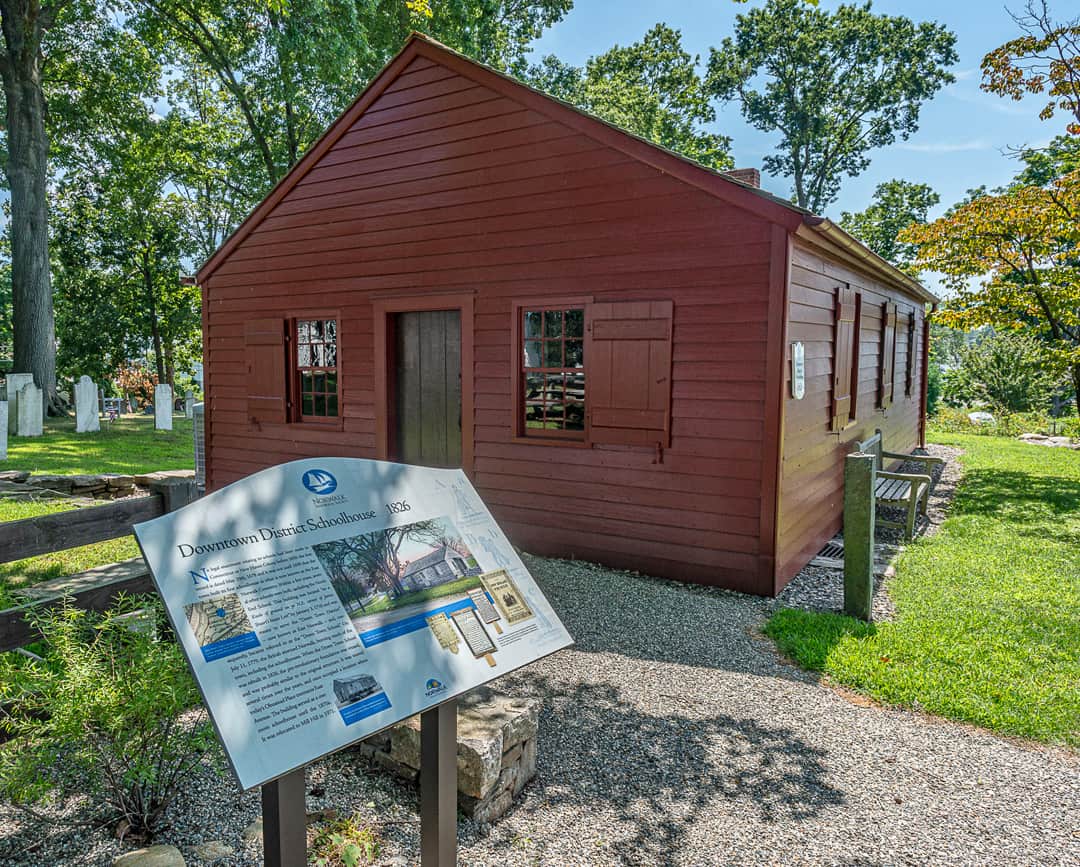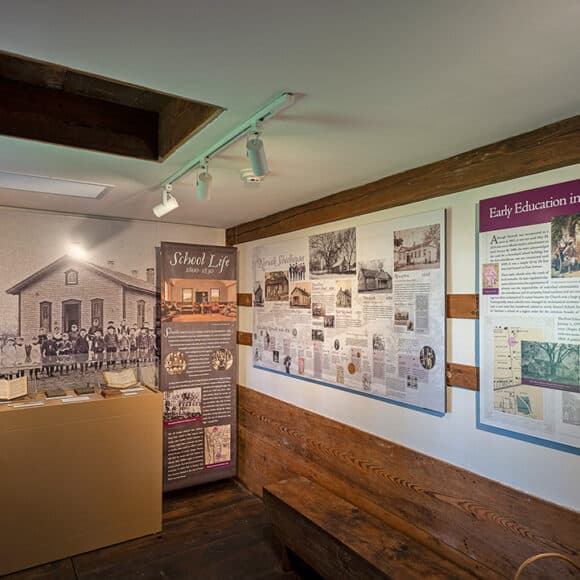Downtown District Schoolhouse
A Traditional One-Room School
In April 1812, the Town of Norwalk set aside a rectangular plot of “ground on Town House Hill” for a schoolhouse. No maps at this time show the presence of a school on Town House Hill, although by the 1820s, there does seem to be one on Earle Hill, further down East Avenue.
The Little Red Schoolhouse, historically known as the Down Town District School, was in use by 1826 and served the community for a little over four decades before it was closed and replaced by the new Fitch School in 1868. The Town of Norwalk auctioned the building soon thereafter.
The Little Red Schoolhouse was purchased by Oscar Warren Raymond, a First Selectman of Norwalk, who lived next door in 195 East Avenue (the house on this lot was built by Samuel Fitch, brother to Gov. Thomas Fitch). He intended to use the building as a private residence for his father-in-law, Stephen Raymond. Because of this, the building was moved away from the road and further into the lot and its belfry removed. The school bell adorned the boat of Charles Cook St. John for a number of years. Notably, the schoolhouse had unpainted clapboard siding. It was only after its conversion to a private residence that its exterior was painted red, thus giving it its name.
The school served as private residence until the 1960s. Its last resident, Milton Dana Morrill, was an architect and significantly altered its interior, subdividing it into bedrooms and rearranging space to suit his needs.
Since its removal from its original location at 185 East Avenue, the Little Red Schoolhouse has been extensively reconstructed. Interestingly, its placement on Mill Hill also required alterations to the site itself; Architect John Gaydosh organized 870 cubic yards of fill moved from the new Norwalk High School construction site to extend the flat surface southward. The Lockwood crypt vault, which occupied the area, was explored and confirmed empty; it was closed, and its identifying entrance marker moved.
Once placed on its new slab foundation, reconstruction efforts on the Little Red Schoolhouse began and were executed by Brad Taylor and Henry Boyd. Period-specific materials were sourced, where possible, from contemporary structures facing demolition. Since the building had not functioned as a schoolhouse in over a century, the interior space had been significantly altered. Little was original, although the barrel-vaulted ceiling and one pane of glass survived. As a result, Winslow Homer’s painting of a New England country school c. 1820-1850 was used as a source for reconstruction.
Dr. Daryn Reyman-Lock is a native of Connecticut. After graduating from Lehigh University with a B.S. in Geologic Sciences and a B.A. in Archaeology, she matriculated to the University of Nottingham in England to complete a Masters and Ph.D. in Archaeology. Her research is concerned with the social constructs of space and phenomenology.
Upon returning to the United States in 2012, she began working as a historic preservation specialist. Dr. Reyman-Lock often works closely with non-profits to curate exhibits, catalogue and move museum collections, and research historic landscapes and buildings. She also consults for municipalities on a variety of projects.
Norwalk’s Old School House
Connecticut Circle Magazine
September 1954
History of the East Norwalk School
Norwalk After Two Hundred Fifty Years
1901
Norwalk Public Schools
The Romance of Norwalk
1929






















